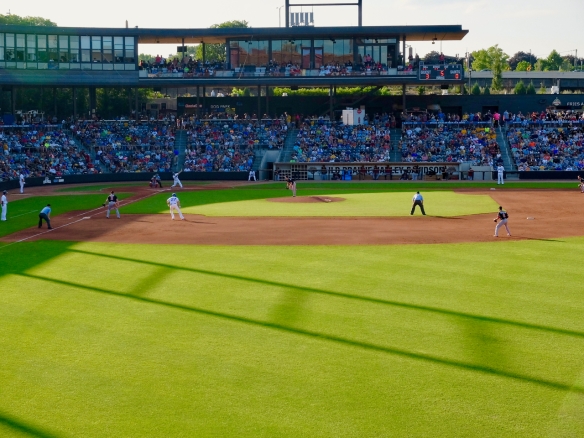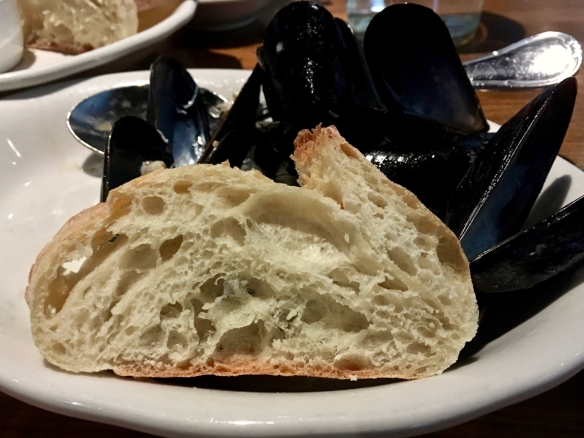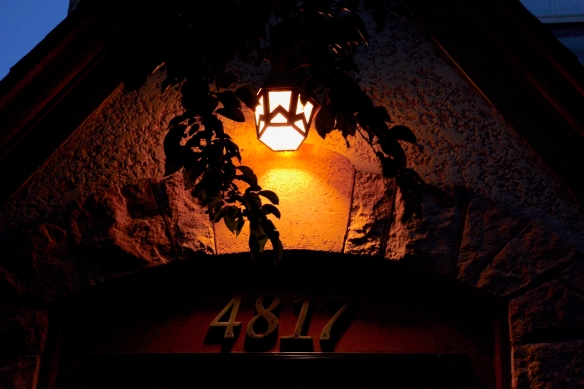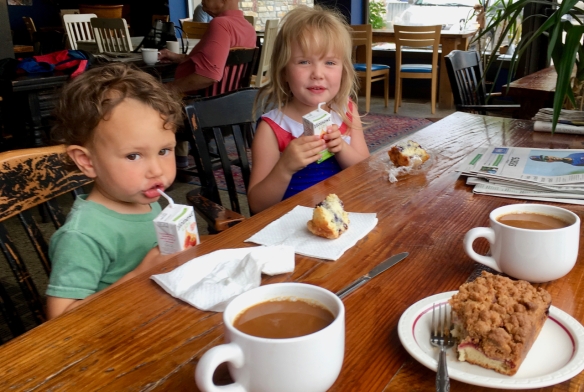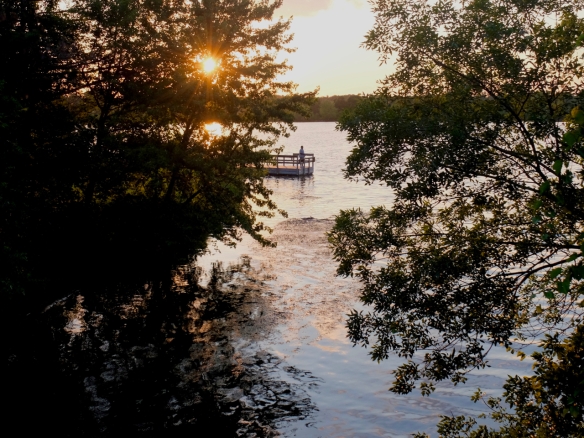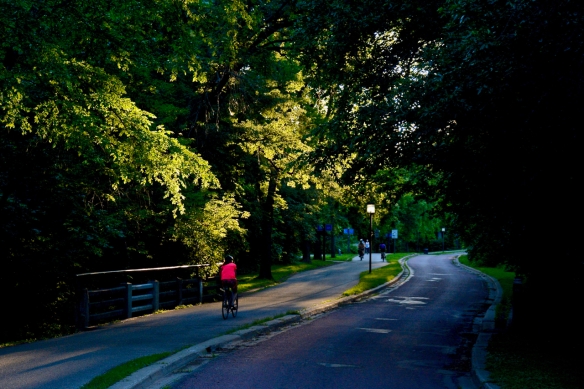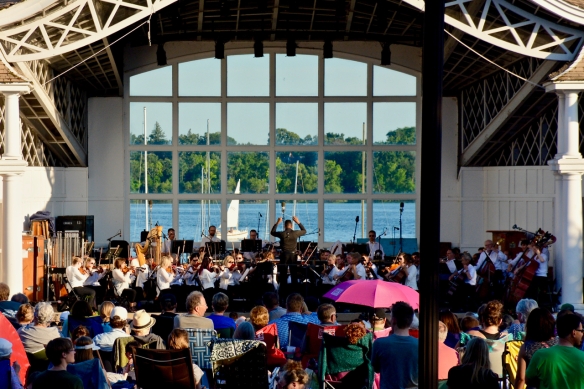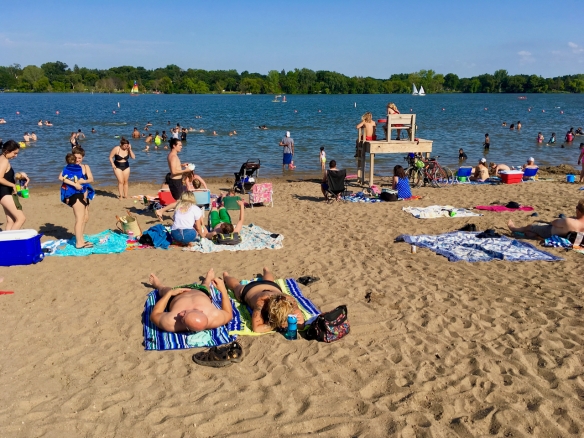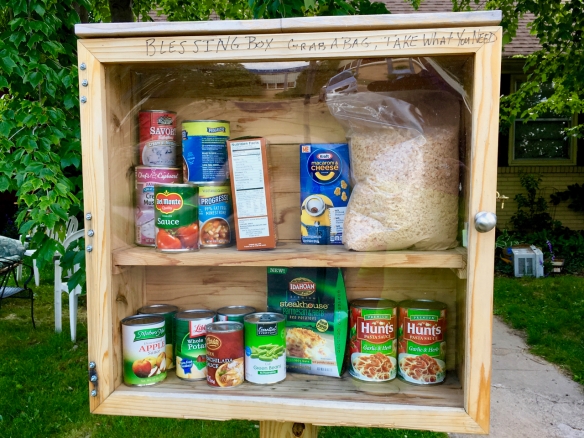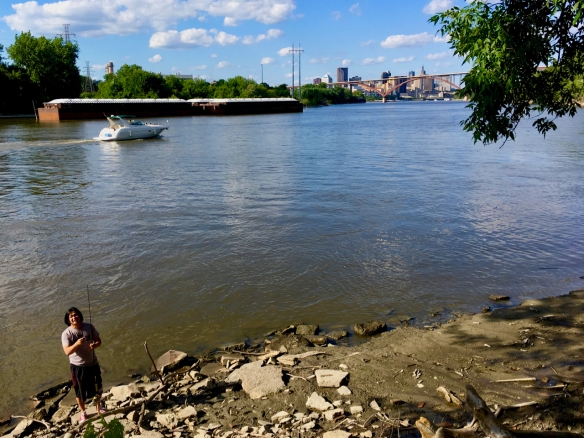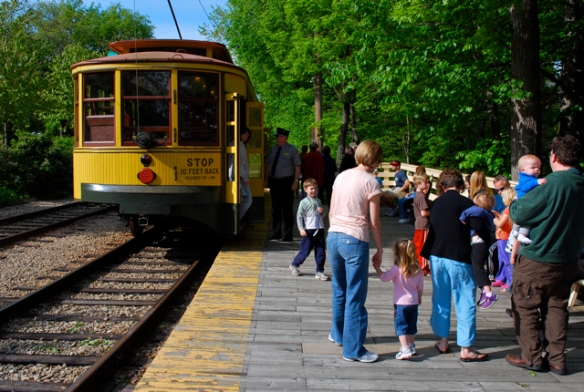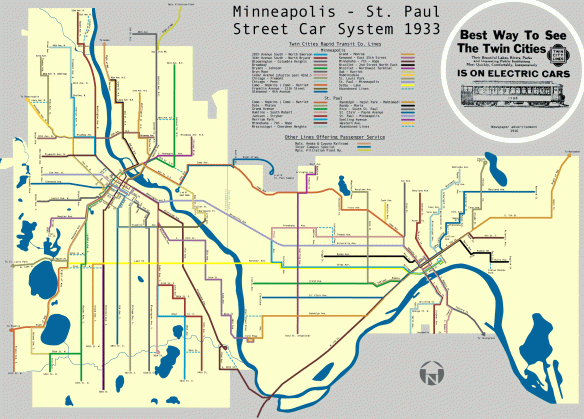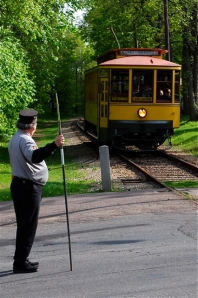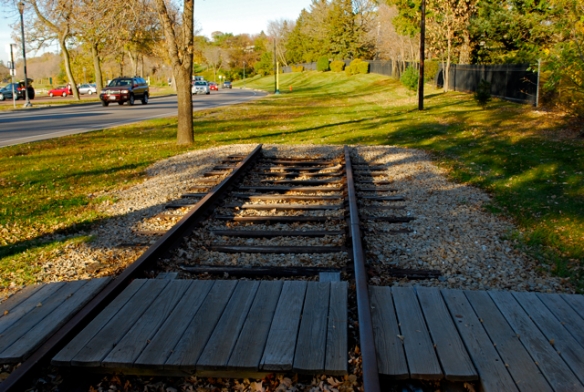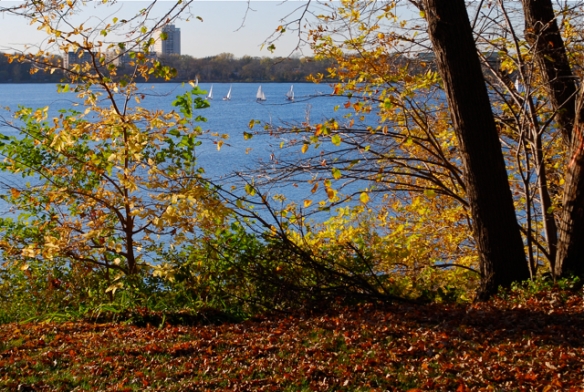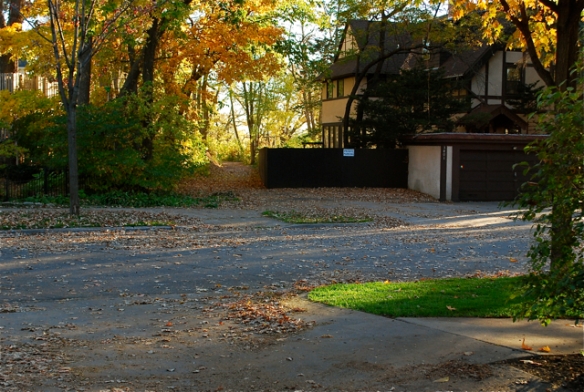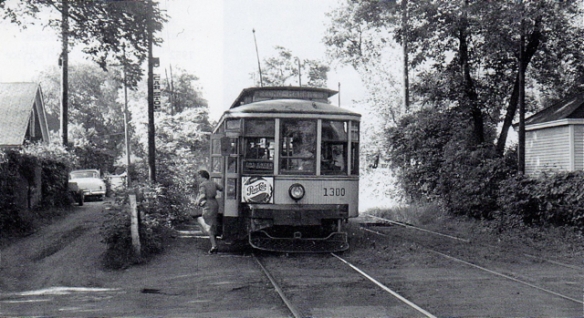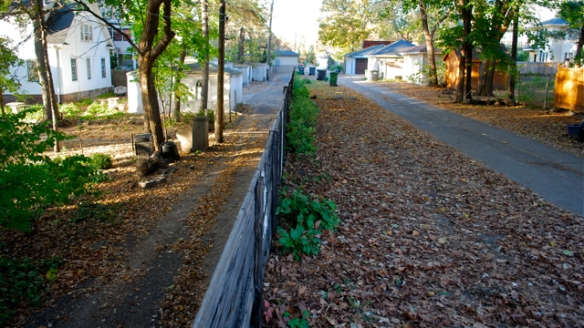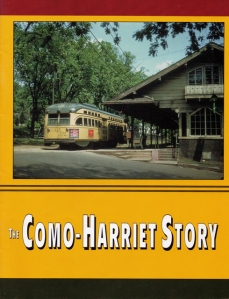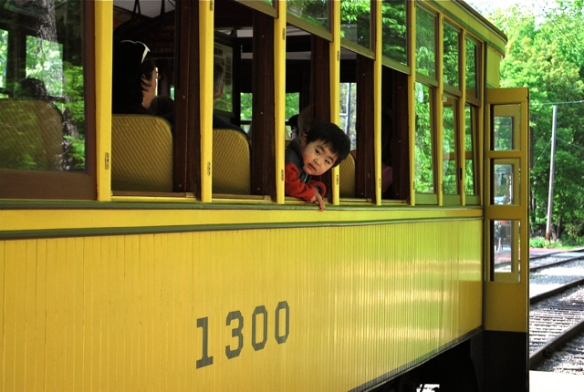“Don’t try to cut the corner on #1.”
Monrad Peterson, golf coach of the Spring Lake Park High School golf team in the late ’60s was a man of few words when it came to actually giving advice about golf. But whenever I tee up on the first hole at Keller Golf Course in St. Paul, I always hear his voice — and his words still ring true more than 40 years later.
Friday was a magnificent, sunny, last-70-degree-day-of-the-year kind of a day. If you’re a golfer in Minnesota, this means you either get yourself to a golf course or regret if for six months. Friends Roger Buoen, Bob Jansen and Bob Whereatt joined me for a nice last-gasp round.

13th hole (old #4) is a short but tricky par 3 over a deep valley (photo by Steve Date)
I play Keller infrequently these days, but decided yesterday that I have to change that next year. I’ve played a lot of courses over the years, but Keller is my hands down favorite.
My love for this place comes from a mixture of beauty, golf course design, history and personal experiences.
1. Beauty
This place is gorgeous. You don’t have to be a golfer to see that the clubhouse and views of the lake off to the west, the trees, the rolling hills, interesting holes all add up to a visual feast. The fact that it’s a moderately-priced public course — a Ramsey County course — makes all of that even more amazing.

View of the 12th green – old #3 (photo by Steve Date)
2. Golf Course Design
The original layout, completed in 1929, was done by Paul Coates, the Chief Engineer of Ramsey County (!?!) How was this possible? Imagine that happening today. Hiring a county engineer to design a golf course of any kind, let alone one that would host PGA tournaments — impossible. According to a Golf Digest article, Coates, at his own expense, traveled to many of the great courses of his day for ideas. He also spent a lot of time with legendary golf course architect Donald Ross and picked his brain. I think Paul Coates should get some sort of award for rising to a challenge way above and beyond the call of duty — not to mention his expertise — and knocking this project out of the park.
There are so many interesting — even quirky — holes that it’s the kind of course you could play every day and not get tired of it. By the 1960s, Keller had become a lower-echelon course on the tour, lacking the length and amenities the PGA had become accustomed to, but it was still Minnesota’s chance to host a big-league golf event and we loved it.

An aerial view of Keller from the 1960s hangs in the clubhouse
3. History
No other golf course in Minnesota has the sheer amount of history as Keller (sorry, Hazeltine — you’re still too young and you only host a few major tournaments).
Keller began hosting a PGA tour stop, The St. Paul Open, in 1930 — its second year of operation. This tournament continued until 1968. Keller was also the site of 2 PGA Championships (again, !?!), a Western Open, 11 LPGA events and a U.S. Publinks Championship.

Keller\’s hilltop clubhouse and parking lot in the 1930s (photo from Keller clubhouse)
All of the great professionals of the ’30s through the ’60s played there. Back in the days when most of the top players played most of the tournaments, you had a chance to see them all at a relatively minor stop like St. Paul. One could get misty-eyed just reciting the names as you walk around the place — Hagen, Hogan, Snead, Sarazen, Nicklaus, Palmer — and on and on.

A signed photo of Arnold Palmer putting on the 13th (then 4th) green in the 1965 St. Paul Open hangs in the Keller clubhouse

My favorite photo in the Keller clubhouse. Ben Hogan (bottom right corner carrying his hat) leads a group of spectators on the narrow, elevated path in front of the tee on the 16th (then the 7th) hole in the 1940 St. Paul Open.
Keller certainly has its share of stories. I’m not sure how true they all are, but it’s fun to think about them.
Gene Sarazen supposedly once took 12 strokes on the short par-3 13th (now the 4th) hole, withdrew from the tournament and vowed never to return. That hole does have a funky big tree right in front of the green, but I’ve always liked it.

John McIntyre looks on as Bob Jansen hits a shot over the inconveniently placed oak tree on the 4th hole (#13 in the old days), site of Gene Sarazen\’s emotional blow up. But a 12? Come on, Gene — a few of those must have been your fault. (August, 2007 photo by Steve Date)
Notorious gangsters of the ’20s and ’30s often came to St. Paul to get away from the authorities in Chicago. Legend has it that John Dillinger quickly dropped his clubs and jumped a train next to the 3rd (now the 12th) hole when he saw FBI agents coming.

Bob Whereatt does his impression of John Dillinger hitting a shot on the hole where he allegedly hopped a train to escape from the Feds. I didn’t know Dillinger was a lefty. (photo by Steve Date)
Roger told me the other day that “Champagne Tony” Lema wrote in his book, Golfer’s Gold, that in the evening after a drink or two, the guys would hit balls from the old 3rd tee across Highway 61 into Keller Lake.
The PGA tour has changed.

Drunk PGA pros sometimes used Hwy 61 and Keller Lake as a driving range (photo by Steve Date)
A few years after the PGA left, the LPGA arrived with the Patty Berg Classic, which ran from 1973 – 1980, named after our local legend who helped found the women’s tour and grew up a few blocks from where I live. It kept Keller alive as a professional venue for a while longer and provided more memories for those of us in the galleries. It was a great course for the women and it was sad when the tournament left for bigger and more modern suburban courses.
4. Personal Experiences
I don’t remember much about that first visit to Keller with my golf team other than Mr. Peterson’s advice and feeling really pumped up about playing a course that the pros played.
Later that summer I went with my friend Steve Erickson to watch the St. Paul Open (by then renamed the Minnesota Golf Classic). I remember walking up to the clubhouse when we got there and the first player I saw was Tom Weiskopf, one of the top pros of that era, standing at the top of the stairs that led down to the locker room. It was the first time I ever saw a pro golfer in person and it was exciting. In those days it was much easier to get close to the players and I remember standing right next to him for a few minutes as he talked with somebody. Then we walked a few yards over to the practice green and listened to Chi Chi Rodriguez cracking wise. It was all very cool.
Roger Buoen also has a lot of memories of watching St. Paul Open/Minnesota Golf Classic as a teen and we always talk about that when we play at Keller together. My favorite story of his also involves Tom Weiskopf. Roger was sitting next to a green when Weiskopf’s group came through. While he was waiting for his turn to putt, he walked over to Roger and made eye contact with him. Roger was, of course, thrilled that this star golfer was going to speak to him. “Can’t putt these shitty greens”, big Tom said. That cracks me up every time I think about it.
Roger and I have a memory for just about every hole at Keller, whether it’s from a St. Paul Open or from playing there in high school ourselves. I vividly recall missing a 6-foot putt on the 2nd hole of a playoff in the regional tournament in 1971, my senior year. That putt kept me out of the state tournament. It was the same green as Weiskopf’s remark to Roger. I guess I couldn’t putt those greens either, shitty or not.
I remember Dan Sikes driving the green on the 1st hole, a dogleg par 4, on his way to a victory in the final PGA tournament at Keller in 1968. He “cut the corner on #1” and it paid off for him.
On Friday, I heard Mr. Peterson’s voice, as usual, and aimed a little farther left. But the ball didn’t obey and headed right over the corner toward the green.
It ended up behind a tree and I made a bogey.

Keller\’s modest but classic clubhouse where I got my first up-close look at the pros back in the \’60s. It was designed by Clarence Wigington, a prominent midwestern architect of the time and one the few Black architects of that era. (photo by Steve Date)
I’ve been thinking about the fact that Keller Golf Course was less than 40 years old when I played it for the first time, but it seemed old to us then. It’s now 81. It’s been a part of me for more than half its life and most of mine.
When the time comes, I hope somebody scatters some of my ashes around this place so I can become a tiny part of it.
